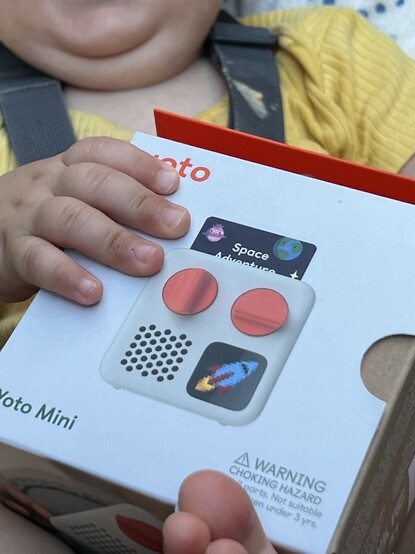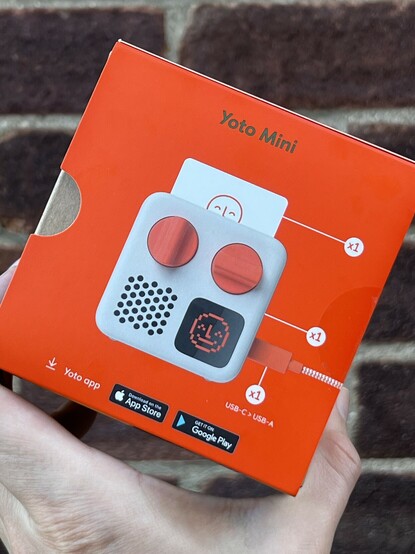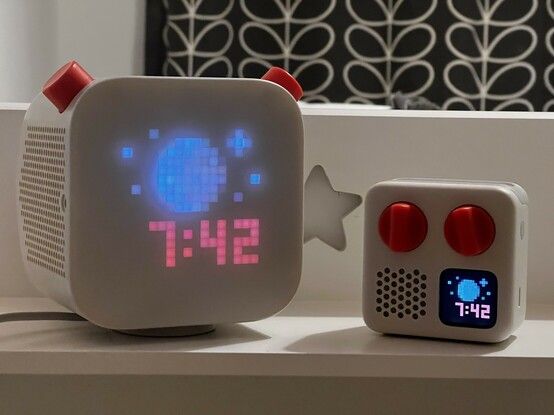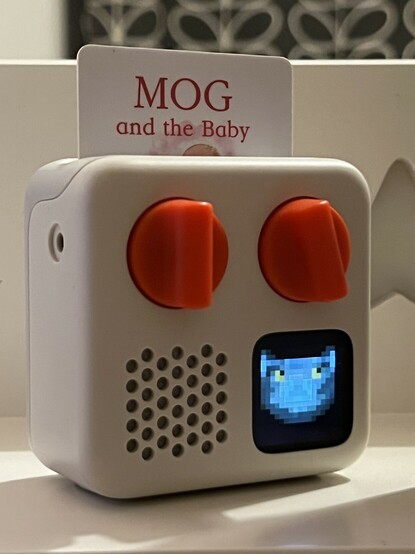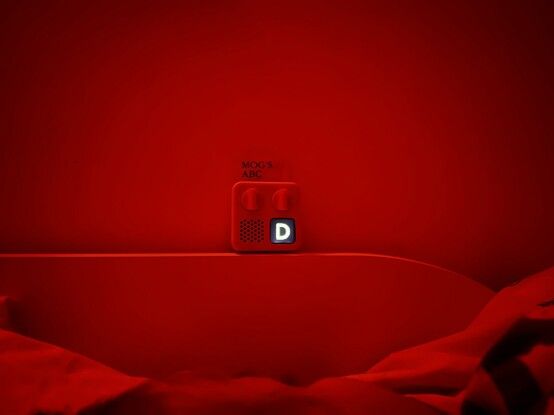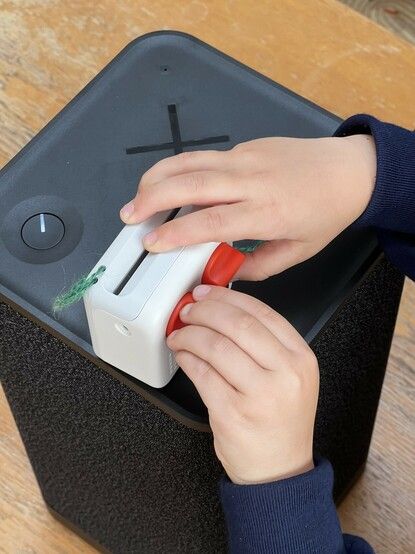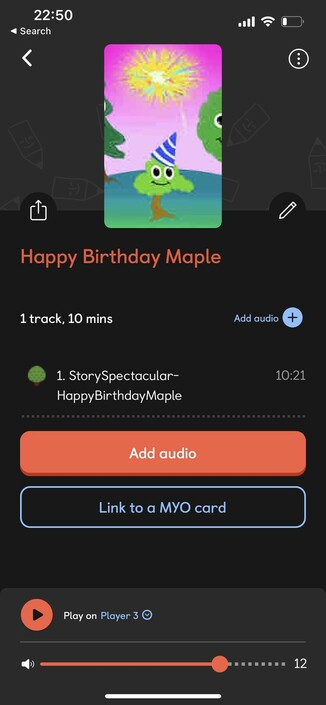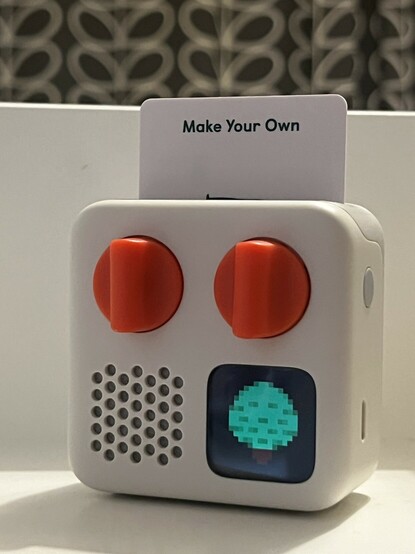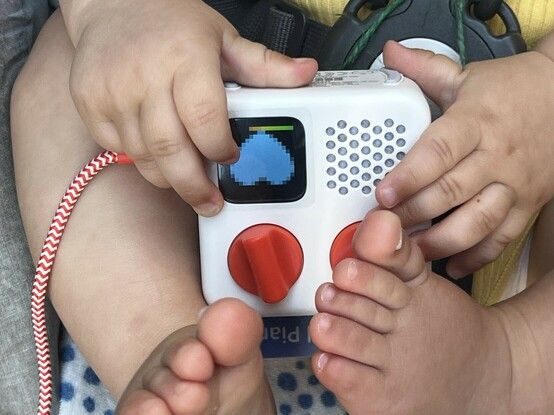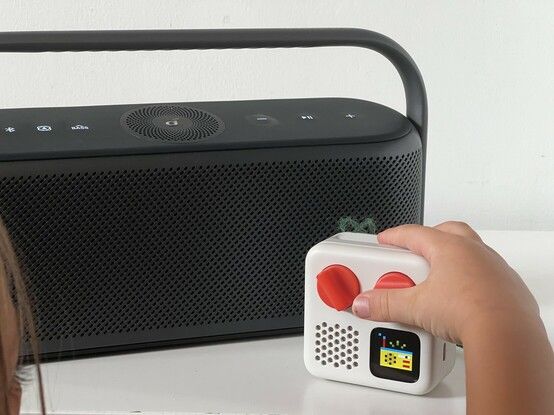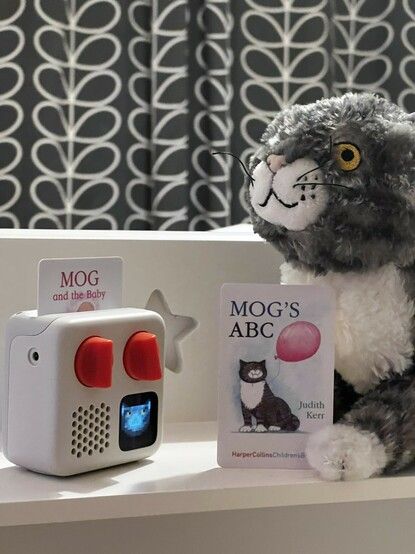Yoto Mini Review
It’s been nearly three years since we received and tested the first Yoto player. A great deal has changed since then. Yoto launched the Yoto mini– the subject of this review- and revised the original player. The basics have remained the same, however, Yoto is a child-friendly, no-nonsense, no-ads audio player that brings an offline physicality to selecting and playing books, music, educational content and more. It does this by offering content on Yoto cards, a credit-card sized medium that a child can select, insert into the top of the player and enjoy without you – or them – needing to poke at a screen.
Tiny Yoto is tiny! Comes in bright, striking, white and orange packaging to match the high contrast white and orange product design.
In those three years Yoto have also proven both the concept and their commitment to an expanding library of content. They’ve brought onboard everyone from LEGO to Disney to, just recently, Sesame Street and that’s not even scratching the surface. PAW Patrol? Yup. Beatrix Potter? Plenty! The Chronicles of Narnia- you bet, seven whole books of C. S. Lewis’s enigmatic Christian allegory can be yours to relive your childhood. They’ve even got Queen’s Greatest Hits which, juxtaposed against a wealth of simple child-friendly songs, is a little out of place but nonetheless very welcome. The library of content is dizzying, and its revival of physical media for a whole new generation is – as I’ve said before – wholesome. Tactile. Nostalgic.
I’m bought and sold on the concept, and Yoto has proven it, but is their mini player any good?
Ha, well, to retread old ground: Well. Yes. Yes it is.
Big Yoto, Yoto mini
They each have their own particular charm, with the “invisible” LED matrix display on the big Yoto being particularly cool. But… I’m actually really down with Yoto mini. It’s almost… too good.
The problem with Yoto mini isn’t so much that it’s good, but that it’s almost too good. Perhaps Yoto recognise this, and that’s why the original player had a refit, but at £59.99 versus it’s bigger sibling’s £99.99 you get almost all the same functionality in a package that travels much better and is just… squeeee… so cute. Yoto’s primary concern is – presumably – content, so they’re not incentivised to make the Yoto Mini anything less than excellent- and it is, though it lacks some features of its bigger sibling.
Most conspicuously missing from the Yoto mini is the nightlight – actually a very handy feature. In addition to this the mini lacks a room thermometer, has half the storage capacity (16GB in lieu of 32GB), mono audio and a little less battery runtime (20 vs 24 hours).
The mini also lacks the charging dock, though the full-size Yoto has now swapped for a standard Qi charger (like the one you might use with your mobile phone) which is an optional, £29.99 extra if you don’t already have one. The USB Type-C port means it’s probably compatible with your phone charger, and almost certainly compatible with any portable battery you might have- extending its 20 hour runtime into, potentially, days.
The Yoto mini is pretty refined over its larger sibling, somehow packing all the same functionality - charging pad aside - into an adorably tiny package. USB-C charging is a bonus.
What’s left is an ultra-compact player that still somehow manages to be loud enough to serve perfectly well as a tiny bedside story-teller. No need to sacrifice your mobile phone upon the altar of sleep. Yoto mini is sleek, rounded and – with no small amount of help from its bright orange dials – striking, yet for all its reduction in size it feels no less rugged, and no less reassuringly solid than its counterpart.
I asked X what he thought- “I love it,” he replied. “Is it waterproof?” he followed. “No.” I said. “Is the big one waterproof?”. “No.” I said, “Maybe it should be.”
Maybe it should be. Looking over some of the Bluetooth speakers and earbuds I’ve tested lately, with their lofty IP ratings and rubber gaskets over their charging ports, I can’t help but wonder why Yoto mini isn’t at least splashproof. For something that’s designed for out-and-about use it feels like an oversight. Sure it has to have a slot for cards somewhere, but there’s nothing stopping that draining through the bottom of the device. Gaskets for speakers are a solved problem and even water resistant USB-C ports are a thing. If I were to reach, and I’ll admit I’m reaching a bit here, for a single solid critique of the Yoto mini it would be that I can’t chuck it in a paddling pool and have it still work tomorrow. In all other respects not only is it excellent, but continued software updates and an expanding library mean it’s always getting better.
D for Dramatic
The mini is effectively a sort of iPod (okay, okay, portable mp3 player) for kids that forgoes a traditional user interface in lieu of interchangeable cards. It harks back to the days of loading cassette tapes into a Sony walkman- yeah, I’m that old. It acknowledges that the line between portable music player and smartphone has blurred to the point of non-existence and that kids need something else a little less connected and a little more focussed.
So it’s not surprising, then, that Yoto mini will pair to Bluetooth headphones, including the vibrant, on-brand orange ones that Yoto sell for an entirely reasonable £34.99, wired headphones (via it’s very retro – ha – 3.5mm audio jack) or even potentially your car’s stereo, via that same Bluetooth connection. (I don’t think our 10 year old car is a good litmus test for this.) And Yoto even have a travel case, to pack all of this conveniently into one tidy case.
Bluetooth pairing with a big giant speaker makes Yoto mini into YOOTOOOOOOORROOOOOO
Our three year old Yoto player has picked up some bumps and bruises, but it’s held up well and still – importantly – works. I’d expect to see the same of the mini- but only time will tell.
The cards, too, have held up, though they do have a nasty habit of getting misplaced- while preparing for this review I turned the house upside down tracking down a handful of wayward stories. I didn’t strictly have to. Yoto have the concept of “MYO” or “My Yoto” cards. Blank cards which you can- via the mobile app- link a wayward story to. Or, in fact, any mp3 of your choosing. One great use for this is podcasts or single podcast episodes that your little un’ is particularly fond of. X loves “Happy Birthday Maple,” a podcast episode from Story Spectacular, and it was easy enough to grab the mp3 and assign it to an MYO card.
Adding custom mp3 content to the app is a great way to snag that odd podcast episode your child loves and give them a custom card to play it on demand!
If all else fails, you can start any of the content in your library playing on any of the players registered to you, or even on your phone if you’re so inclined.
While the Yoto app is excellent, it does have a small quirk with Yoto mini. If you’re out and about – away from your home network – then the app will not be able to connect, start content, adjust parental controls or settings or any of its other regular duties. This can trip you up if you’re expecting cards to work on the go, since Yoto mini requires an internet connection to download and play content and will not download and store anything for offline play until it’s left to its own devices with no card inserted. I found this out the hard way, after inserting the Mindful Piano card, tucking the Yoto next to baby C and setting out on a Tesco expedition. The content does not download right-away, so if you’re planning an excursion with all-new content- or keeping some brand new Yoto cards hidden away to whip out when you need a few minutes peace on holiday – you’ll have to account for this.
Baby C in full blown “this is mine now” mode, clutching the Yoto mini as it plays calming piano. I hadn’t left it to download content, so it stopped when we left WiFi range! Took a few laps of the neighbourhood to get him to sleep 🤣
This very retro approach to music selection leaves kids – mostly – without a user interface for accessing stored content. Whether it’s downloaded or not, they’ll have to insert a card if they want to play the content “on” it.
And I say “on” because the content isn’t actually on the cards. As I mentioned in my review of the full-sized player, you’re holding, effectively, a digital licence that permits the Yoto player to download the audiobook, music or otherwise from Yoto’s servers. Should Yoto’s servers ever go away – granted they seem to be going from strength to strength at the moment – then, far from the cassette tapes or CDs of yore and old – you’ll suddenly find yourself with effectively blank cards. This is, I hasten to add, not meaningfully different from any other digital storefront. While it’s a shame the audio content could not be written to the cards themselves it is, for now, a blessing that losing a card doesn’t mean losing your content.
Despite the ephemeral nature of digital content, connectivity has its benefits, too. Not only does Yoto offer their growing library of paid content, you’ll also get effectively unlimited kidsbop via Yoto’s Internet Radio feature, plus a daily Yoto Radio broadcast and a handful of other radio stations. You’ll also find, via the mobile app, a wealth of content previews, the odd tidbit of free content, plenty of sounds-for-sleep in the sleep sounds section and a Sleep Radio, too. While 16GB of storage won’t stretch super far, you can curate entire playlists of your MP3s, make your child a mix tape, trim the ads out of their favourite podcast episodes, record yourself reading a story – great if you’re a parent with nighttime or extended work hours – and more besides. The Yoto app makes most of this easy enough, albeit content is uploaded to their servers where it’s then distributed to all of your players.
Yoto Mini and a good Bluetooth speaker is a combo to beat the 3rd generation full-sized Yoto’s sound into the dust 🤣
Gets a bit silly with volume limiting though, since anywhere above ~4 is LOUD and it goes up to 16 😱
And – right now – Yoto are pretty easygoing with content. Want to stick a card in one player and play the same thing via the app on another? You can do that. Want to lend a card to a friend? I created another account, logged in, activated a card on it- played it on my phone and simultaneously on one of our players. It seems you can also do that. There’s no looming nuisance of DRM, demonstrating that Yoto place an tremendous amount of faith in the lure of their tactile, physical cards. And I don’t think it’s misplaced.
Content really is king for Yoto- in some ways it recaptures the magic I felt standing and staring up at a Woolworths shelf of Commodore 64 videogame cassette tapes. While there’s no such highstreet analog – these cards really should be stocked in Tesco – the idea of picking up a card or two as a reward, some packs for Birthdays and Christmas and so on make Yoto an ever expanding part of your child’s life. In my previous review I mentioned the little vinyl record club I remember from my childhood- I looked forward to the next new thing (granted streaming on demand audio wasn’t a thing back then) even though they’d occasionally get shattered coming through the mailbox. Yoto cards are letterbox friendly and much hardier. And – of course – Yoto offer basically the same service in their Yoto Club.
Not saying Yoto has a big influence… but toddler has a Mog plushie, a Mog costume and has been to see it live 🤣
X, who’s now had a Yoto for most of his life, has been a huge fan of the stories, going as far as to see Mog and Snail & The Whale in their live incarnations. It’s his preferred way to listen to many of Julia Donaldson’s books, which have become something of a multimedia phenomenon. Perhaps for good reason. And beyond books he often deliberately picks an educational card – we’ve had Ladybird Audio’s “Creepy Crawlies” for years now and it’s still a go-to. We’ve got our eye on their “Amazing Vehicles” as a follow-up, and with five whole volumes of these cards to pick from – well – I did say the library of content was dizzying!
In brief – Yoto mini is smaller, cheaper and every bit as good as Yoto. Audio is loud enough that I have to use the parental controls to limit the volume. The tiny display has at least some of the charm of the large, invisible matrix on the bigger device. Far from being just an on-the-go alternative, it’s probably the version I’d pick as a gift- the night light, thermometer and extra storage are great, but that’s money better spent on some great books. And Yoto as a concept? I can’t help but love it, even if the card prices make me wince a little.
Right now you can grab a Yoto mini adventure bundle for £79.99 with headphones and an “Adventure Jacket.” Not a bad deal if you’ve got slightly older kids. Also that Frog Soup adventure jacket is just… *chefs kiss* … perfect!
